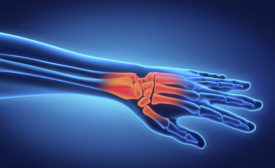Home » MSDS
Articles Tagged with ''MSDS''
A NIOSH Science Blog post
Frequent exertion and frequent standing among US workers
January 16, 2018
A NIOSH Science Blog post
Musculoskeletal health research to benefit temporary retail workers
December 8, 2017
Never miss the latest news and trends driving the safety industry
eNewsletter | Website | eMagazine
JOIN TODAYCopyright ©2024. All Rights Reserved BNP Media.
Design, CMS, Hosting & Web Development :: ePublishing









